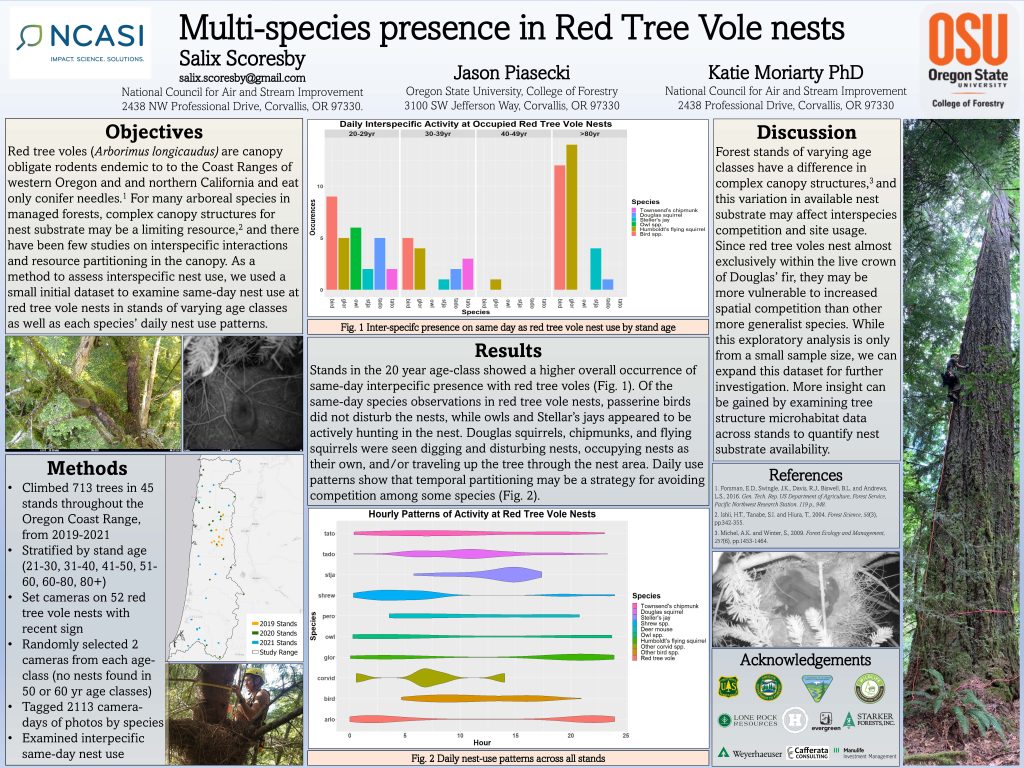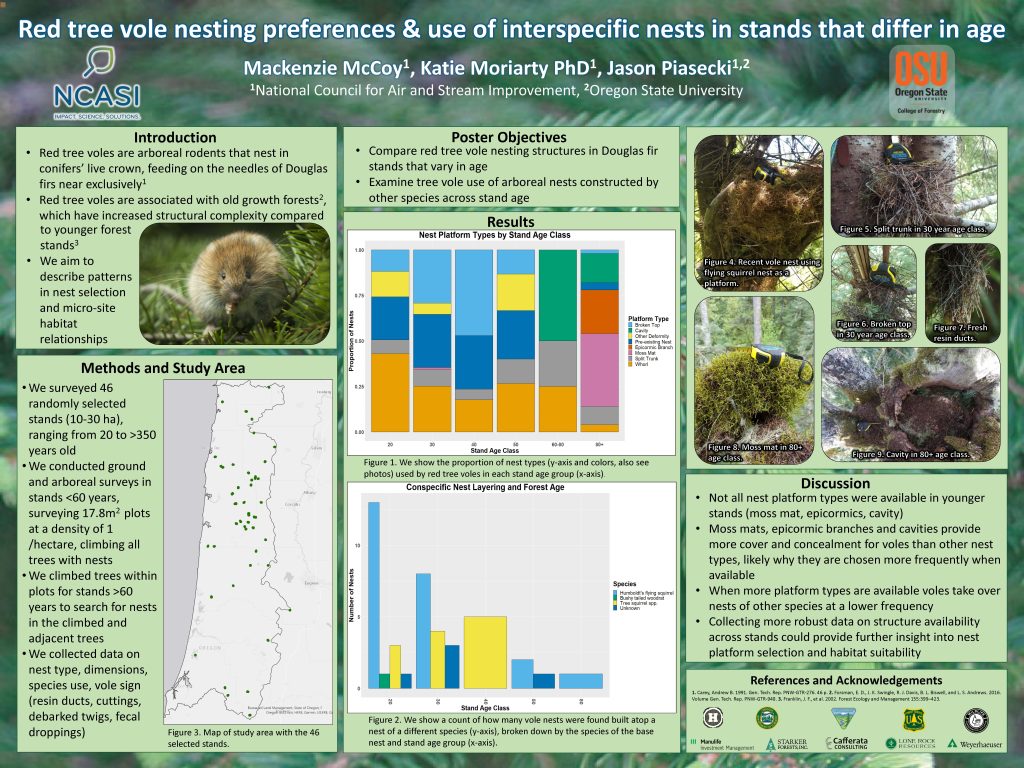Red Tree Voles in Working Forests
Principal Investigator: Katie Moriarty, PhD, NCASI / Senior Research Scientist Western Forestry Wildlife Ecologist
Collaborator: Oregon State University
Supported by: Western Trade Association Member Companies
Project Summary: Although red tree voles (Arborimous longicaudus) are often associated with older forests with complex canopy structure, typically >80 year-old and especially >200 year-old Douglas fir stands, tree vole nests are commonly found in younger forests, including plantations 20-80 years old. The roles of young forests in providing habitat for red tree voles are not well-understood. Individual young forest stands may provide ephemeral habitat, a long-term habitat that supports multiple generations of tree voles, and/or connectivity between patches of older forest. A more comprehensive examination of whether young forest expands the availability of suitable habitat for red tree voles will provide needed information for conservation and management decisions, particularly given the lawsuits following the withdrawal of Endangered Species Act support for this species.
The primary objectives include (1) quantify relative abundance of nests across stand age categories (2) verify nest status at a subset of locations (3) estimate red tree vole nest abundance; (4) collect age and sex data on red tree voles to assess whether populations in young forests are balanced or male/juvenile dominated, and (5) establish the framework to assess nest or vole persistence and colonization over time.
Project Posters

Contact Katie Moriarty at kmoriarty@ncasi.org
